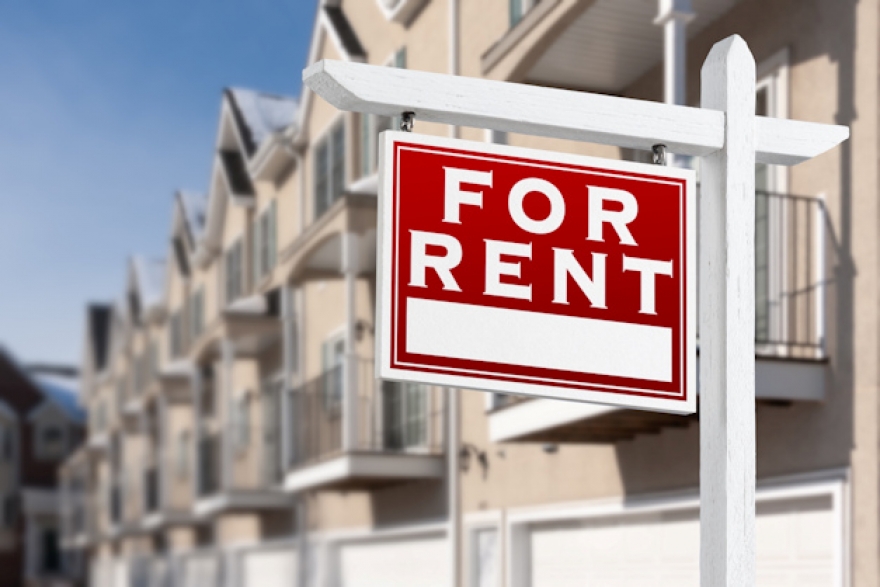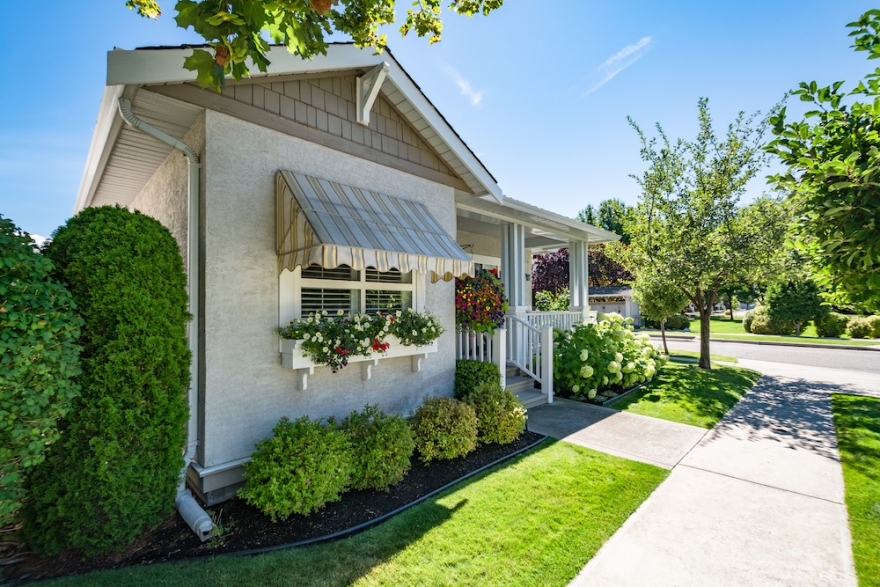New listings of homes for sale are down
25% from a year ago, making it difficult for buyers to find homes but
giving some sellers a competitive edge
New listings of U.S. homes for sale dropped 25% from a year earlier
during the four weeks ending April 9, continuing an eight-month streak
of double-digit declines, according to a new report from Redfin (redfin.com), the technology-powered real estate brokerage.
That’s the biggest drop since the start of the pandemic, but there
was a holiday weekend effect: Easter fell a week earlier this year than
last year, making the new-listings decline larger than it would have
been if Easter had fallen during last year’s comparison period.
People are reluctant to sell because they don’t want to give up their
low mortgage rate and it’s hard to find another home to buy. Although
rates are down from their November peak, this week’s average is 6.27%;
85% of homeowners have a rate far below 6%. The bright side for
homeowners who are listing now is that desirable, well-priced homes are
being snapped up in bidding wars in markets where demand outpaces
supply.
New listings fell from a year earlier in all 50 of the most populous
U.S. metros, with the biggest declines in California. They dropped most
in Sacramento and Oakland (-47% YoY apiece), San Francisco (-43.2%), San Jose (-42.9%) and San Diego
(-41.4%). The scarcity of homes hitting the market, along with elevated
mortgage rates, is holding back sales. Pending home sales dropped more
than 30% in each of those metros, more than the 19% nationwide decline.
While pending sales are down, early-stage homebuying demand is
ticking up, with mortgage-purchase applications up 8% from a week
earlier, seasonally adjusted.
Angela Langone,
a Redfin agent in San Jose, said there aren’t enough listings to go
around, with multiple offers on many homes. Both new listings and
pending sales are down more than 40% from a year ago in San Jose.
“Many buyers here aren’t held back by high mortgage rates; it’s the
lack of inventory that’s really getting in their way,” Langone said. “I
have several clients who are serious about buying a home and they’re
actively looking, but they can’t find anything right now and they’re
waiting for more homes to trickle onto the market.”
Buyers have more options in other parts of the country. In Nashville, TN,
for instance, new listings and pending sales were both down about 14%
from a year earlier—but those are some of the smallest drops in the
country.
“Inventory isn't a major problem here because the greater Nashville
area is so sprawling, and there are a lot of newly built homes on the
market in the suburbs,” said Nashville Redfin agent Jennifer Bowers.
“Builders went big in the outskirts of the city over the last few years
and now they're offering incentives to attract buyers, to the point
where individual sellers are having a hard time competing. For buyers
willing to stray from the city center, there are plenty of homes for
sale.”
Two new pieces of economic data serve as tea leaves to anticipate how
mortgage rates will trend over the next few months: It’s unlikely
they’ll skyrocket, but it’s also unlikely they’ll come down enough to
motivate locked-in homeowners to sell. The March consumer-price index
and jobs report showed that inflation continued to cool and wage growth
ticked down from the month before, but inflation is still higher than
the Fed’s target.
“The Fed has made some progress cooling inflation with rate hikes but
there’s still work to be done,” said Redfin Chief Economist Daryl
Fairweather. “Even if the Fed chooses not to hike interest rates next
month, which would likely bring down mortgage rates, the limited supply
of homes for sale would remain a major obstacle for would-be buyers.
Rates dipping below 6% would probably pique the interest of more buyers,
but enough homeowners have rates in the 3% or 4% range that we’re
unlikely to see a big uptick in new listings.”
Home Prices Falling in More Than Half of the U.S.
The median U.S. home-sale price fell 2.3% year over year to roughly $364,000, the biggest decline in more than a decade.
Prices fell significantly more than that in some metros, but rose in
others. Home-sale prices dropped in more than half (29) of the 50 most
populous U.S. metros, with the biggest drop in Austin, TX (-13.9% YoY). Next come four West Coast metros: Oakland (-11.4%), San Francisco (-10.9%), Seattle (-10.9%) and Sacramento (-10.6%). That’s the biggest annual decline since at least 2015 for Seattle.
On the other end of the spectrum, sale prices increased most in Fort Lauderdale, FL, where they rose 11.6% year over year. Next come Milwaukee (9.5%), Miami (8.5%), Cincinnati (7.3%) and Providence, RI (7.2%).
Leading indicators of homebuying activity:
- For the week ending April 13, average 30-year fixed mortgage rates
dropped to 6.27%, the fifth straight week of declines, though it only
ticked down slightly from the week before. The daily average was 6.42%
on April 12.
- Mortgage-purchase applications during the week ending April 7
increased 8% from a week earlier, seasonally adjusted. Purchase
applications were down 31% from a year earlier.
- The seasonally adjusted Redfin Homebuyer Demand Index—a measure of
request for home tours and other homebuying services from Redfin
agents—dropped slightly from the 10-month high hit a week earlier during
the week ending April 9. It was up 6% from a month earlier, but down
21% from a year earlier.
- Google searches for “homes for sale” were up about 40% from the
trough they hit in November during the week ending April 8, but down
about 18% from a year earlier.
- Touring activity as of April 8 was up about 13% from the start of
the year, compared with a 26% increase at the same time last year,
according to home tour technology company ShowingTime.
Key housing market takeaways for 400+ U.S. metro areas:
Unless otherwise noted, this data covers the four-week period ending April 9. Redfin’s weekly housing market data goes back through 2015.
- The median home sale price was $364,366, down 2.3% from a year
earlier, the biggest decline in more than a decade and the seventh week
in a row of prices declining annually after more than a decade of
increases. The latter is according to Redfin’s monthly dataset, which
goes back through 2012.
- The median asking price of newly listed homes was $391,200,
essentially flat (up 0.1%) year over year. That’s the smallest increase
since May 2020.
- The monthly mortgage payment on the median-asking-price home was
$2,502 at a 6.27% mortgage rate, the current weekly average. Monthly
mortgage payments are down slightly from the peak they reached last
month, but up 11% ($255) from a year ago.
- Pending home sales were down 18.8% year over year, the biggest decline in more than two months.
- Pending home sales fell in all 50 of the most populous U.S. metros. They declined most in Las Vegas (-45.7% YoY), followed by four West Coast metros: San Jose, CA (-42.9%), Seattle (-42.4%), Portland, OR (-41.9%) and Oakland, CA (-41.1%).
- New listings of homes for sale fell 25.4% year over year, the
biggest decline since May 2020. If not for Easter falling on April 9,
the decline likely would have been in line with the prior four-week
period’s 22% drop.
- New listings declined in all 50 of the most populous U.S. metros. They declined the least in Texas: Fort Worth (-7.6% YoY) saw the smallest drop, followed by Austin (-11.1%), Dallas (-11.6%), Nashville (-13.5%) and Houston (-13.9%).
- Active listings (the number of homes listed for sale at any point
during the period) were up 10.4% from a year earlier, the smallest
increase in more than five months. The total number of homes for sale
posted an unseasonal early-spring decline.
- Months of supply—a measure of the balance between supply and demand,
calculated by the number of months it would take for the current
inventory to sell at the current sales pace—was 2.8 months, down from
3.2 months a month earlier and up from 1.9 months a year earlier. Four
to five months of supply is considered balanced, with a lower number
indicating seller’s market conditions.
- 47% of homes that went under contract had an accepted offer within
the first two weeks on the market, the highest level since June, but
down from 53% a year earlier.
- Homes that sold were on the market for a median of 37 days, the
shortest span since November. That’s up from 22 days a year earlier and
the record low of 18 days set in May.
- 28% of homes sold above their final list price, the highest share in more than three months but down from 51% a year earlier.
- On average, 4.9% of homes for sale each week had a price drop, up from 2.3% a year earlier.
- The average sale-to-list price ratio, which measures how close homes
are selling to their final asking prices, was 98.9%, the highest level
in nearly six months but down from 102.1% a year earlier.
To view the full report, including charts, please visit: https://www.redfin.com/news/housing-market-update-new-listings-home-prices-fall





![Cities Where People Pay the Lowest, Highest Property Taxes [New LendingTree Study]](https://realtytimes.com/media/k2/items/cache/5c6e34f0e904a8a0f86b6124c9a65da3_M.jpg)


